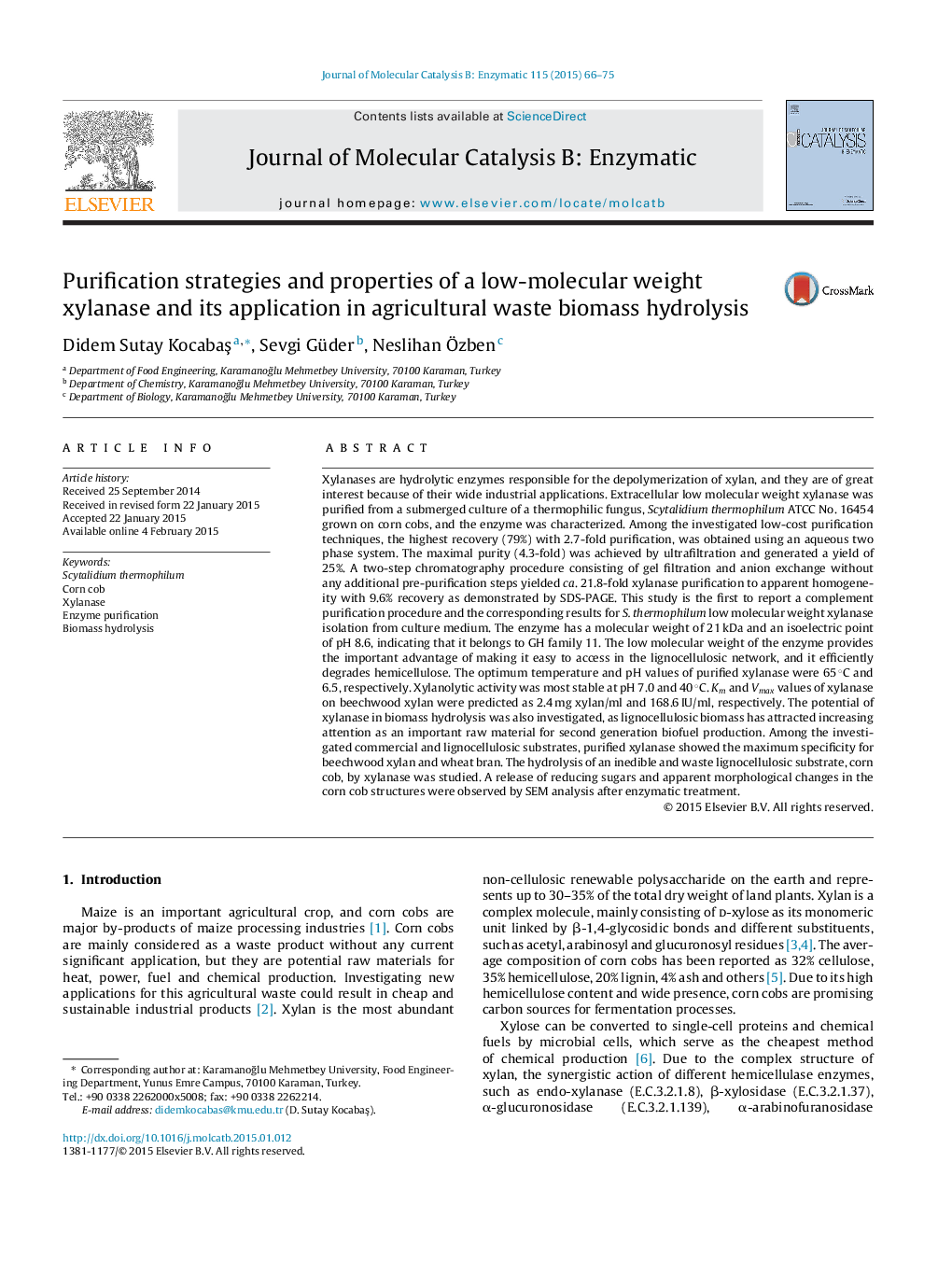| کد مقاله | کد نشریه | سال انتشار | مقاله انگلیسی | نسخه تمام متن |
|---|---|---|---|---|
| 69554 | 48780 | 2015 | 10 صفحه PDF | دانلود رایگان |
• Waste lignocellulosic material; corn cob was utilized in the fermentation medium.
• Low-cost and analytic purification techniques were comparatively investigated.
• Xylanase was purified 21.8-fold with 9.6% recovery to apparent homogeneity.
• Biomass hydrolysis by xylanase was studied for second generation biofuel production.
• Important morphological changes were observed after enzymatic hydrolysis.
Xylanases are hydrolytic enzymes responsible for the depolymerization of xylan, and they are of great interest because of their wide industrial applications. Extracellular low molecular weight xylanase was purified from a submerged culture of a thermophilic fungus, Scytalidium thermophilum ATCC No. 16454 grown on corn cobs, and the enzyme was characterized. Among the investigated low-cost purification techniques, the highest recovery (79%) with 2.7-fold purification, was obtained using an aqueous two phase system. The maximal purity (4.3-fold) was achieved by ultrafiltration and generated a yield of 25%. A two-step chromatography procedure consisting of gel filtration and anion exchange without any additional pre-purification steps yielded ca. 21.8-fold xylanase purification to apparent homogeneity with 9.6% recovery as demonstrated by SDS-PAGE. This study is the first to report a complement purification procedure and the corresponding results for S. thermophilum low molecular weight xylanase isolation from culture medium. The enzyme has a molecular weight of 21 kDa and an isoelectric point of pH 8.6, indicating that it belongs to GH family 11. The low molecular weight of the enzyme provides the important advantage of making it easy to access in the lignocellulosic network, and it efficiently degrades hemicellulose. The optimum temperature and pH values of purified xylanase were 65 °C and 6.5, respectively. Xylanolytic activity was most stable at pH 7.0 and 40 °C. Km and Vmax values of xylanase on beechwood xylan were predicted as 2.4 mg xylan/ml and 168.6 IU/ml, respectively. The potential of xylanase in biomass hydrolysis was also investigated, as lignocellulosic biomass has attracted increasing attention as an important raw material for second generation biofuel production. Among the investigated commercial and lignocellulosic substrates, purified xylanase showed the maximum specificity for beechwood xylan and wheat bran. The hydrolysis of an inedible and waste lignocellulosic substrate, corn cob, by xylanase was studied. A release of reducing sugars and apparent morphological changes in the corn cob structures were observed by SEM analysis after enzymatic treatment.
Figure optionsDownload as PowerPoint slide
Journal: Journal of Molecular Catalysis B: Enzymatic - Volume 115, May 2015, Pages 66–75
